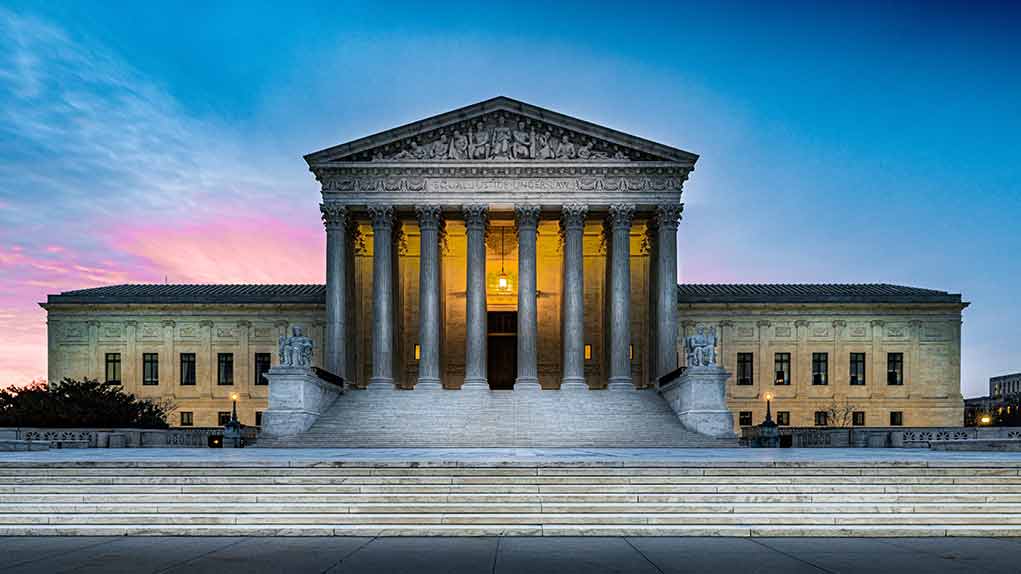
Supreme Court strikes down activist interpretations of environmental law, clearing path for crucial American infrastructure development in a decisive 8-0 ruling.
Key Takeaways
- The Supreme Court unanimously ruled 8-0 that NEPA environmental reviews should only consider direct project impacts, not speculative downstream effects.
- Justice Brett Kavanaugh criticized how environmental claims have been weaponized to unnecessarily delay critical infrastructure projects.
- The ruling directly benefits an 88-mile railroad project in Utah designed to transport crude oil, potentially lowering energy costs and creating jobs.
- The decision represents a significant victory for developers and American energy independence by reducing regulatory red tape.
- Major infrastructure projects nationwide will now face fewer delays from excessive environmental review requirements.
Supreme Court Reins in Regulatory Overreach
In a landmark decision that redefines the scope of environmental reviews, the Supreme Court unanimously ruled 8-0 to limit the application of the National Environmental Policy Act (NEPA). The ruling establishes that federal agencies must evaluate only the direct environmental effects of projects, not speculative downstream impacts that environmental activists have long used to block development. This decision directly supports the development of an 88-mile railroad in northeastern Utah designed to transport waxy crude oil to national markets, potentially boosting domestic energy production and creating jobs in rural communities.
“A 1970 legislative acorn has grown over the years into a judicial oak that has hindered infrastructure development under the guise of just a little more process. A course correction of sorts is appropriate,” said Justice Brett M. Kavanaugh.
The case, Seven County Infrastructure Coalition v. Eagle County, centered on whether federal agencies must consider all potential environmental consequences, no matter how far removed from the actual project. For decades, environmental groups have exploited NEPA’s vague language to file lawsuits and create costly delays for critical infrastructure projects. Justice Kavanaugh specifically noted in his opinion that environmental claims have been used excessively as a procedural weapon rather than a legitimate protection measure, creating unnecessary obstacles to economic development.
The Supreme Court on Thursday sided with the Biden administration in a ruling that clears the way for a proposed rail line in eastern Utah to move forward, narrowing how federal agencies must conduct environmental reviews for major infrastructure projects.
In a unanimous 8-0… pic.twitter.com/7WHyO2F3lb
— Melissa Hallman (@dotconnectinga) May 29, 2025
Energy Independence and Economic Growth
The immediate beneficiary of this ruling is the Uinta Basin Railway project, which will connect Utah’s oil-rich region to Colorado’s national rail network. Proponents argue this will significantly boost America’s energy independence by facilitating the extraction and transport of domestic crude oil while reducing dependence on foreign sources. The project had already undergone extensive environmental review, but activist groups challenged these studies for not considering hypothetical secondary impacts like potential oil spills and greenhouse gas emissions occurring far from the actual construction site.
“Today, the Supreme Court took long overdue steps to restore NEPA to its original intent and ensure a broken permitting process doesn’t stand in the way of American oil and natural gas production,” said Ryan Meyers.
Industry experts predict this ruling will dramatically reduce costs and approval timelines for major infrastructure projects nationwide. Projects that previously faced years of litigation and billions in additional expenses due to excessive environmental reviews can now proceed with reasonable safeguards in place. The decision also represents a significant win for President Trump’s agenda to accelerate American infrastructure development and energy production. By limiting the scope of environmental reviews to direct impacts only, federal agencies can focus on genuine environmental protections rather than satisfying endless procedural demands.
Liberals Concur But With Reservations
Notably, the Court’s three liberal justices—Sonia Sotomayor, Elena Kagan, and Ketanji Brown Jackson—agreed with the decision’s narrow focus but wrote separately to distance themselves from Kavanaugh’s broader criticisms of environmental regulations. Their concurrence indicates that even traditionally pro-environmental voices on the Court recognized that NEPA had been interpreted far beyond its original intent. Justice Neil Gorsuch did not participate in the case, though his absence did not affect the unanimous outcome.
“Today’s decision undermines decades of legal precedent that told federal agencies to look before they leap when approving projects that could harm communities and the environment,” said Earthjustice Vice President Sam Sankar.
Environmental groups expressed predictable outrage, claiming the decision undermines decades of environmental protection. However, the Court emphasized that NEPA remains a procedural statute that requires reasonable environmental consideration—not an absolute barrier to development. Justice Kavanaugh specifically noted that effects from separate projects are “too attenuated” to be relevant to agency decision-making and called for judicial deference to agency officials who prepare environmental impact statements rather than allowing activist judges to impose additional requirements not found in the law itself.
Nationwide Impact on Infrastructure
The ruling’s impact extends far beyond the Utah railway project. Major infrastructure initiatives nationwide, including California’s troubled high-speed rail and the Delta Conveyance Project, will now face fewer regulatory hurdles. This streamlining comes at a critical time when America’s aging infrastructure requires significant modernization. The decision effectively returns NEPA to its original purpose—ensuring reasonable environmental consideration without imposing impossible burdens that prevent economic progress and national development.
For conservative Americans frustrated with decades of regulatory overreach, this Supreme Court decision represents a significant victory. It demonstrates how the Court, shaped by President Trump’s judicial appointments, is systematically dismantling administrative excesses that have hampered economic growth. By requiring federal agencies to focus on direct, measurable impacts rather than speculative scenarios, the Court has taken a major step toward restoring balance between environmental protection and essential economic development that benefits all Americans.












